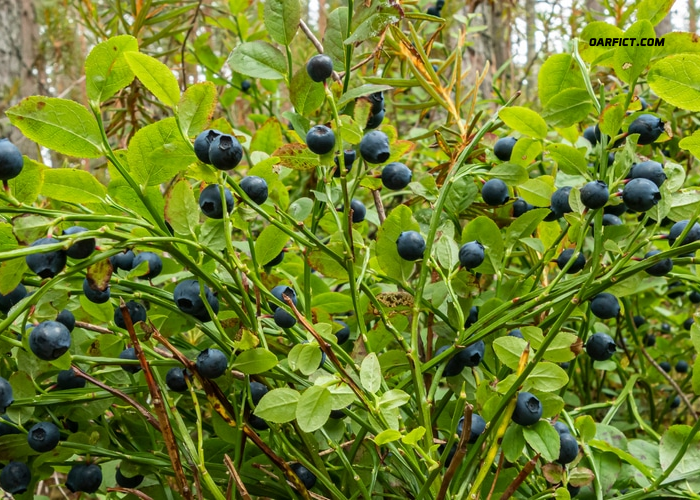Blueberries, with their vibrant color, sweet-tart flavor, and numerous health benefits, have become a favorite among fruit enthusiasts. While blueberries are commonly associated with regions that have cooler climates, it’s entirely possible to successfully grow these delectable berries in Texas. With the right knowledge, preparation, and care, cultivating blueberries in the Lone Star State can yield bountiful harvests and a sense of accomplishment for both seasoned and novice gardeners.
Choosing the Right Blueberry Varieties:
Before embarking on your blueberry-growing journey in Texas, it’s essential to select the appropriate blueberry varieties that are well-suited for the state’s unique climate and soil conditions. Low-chill or Southern highbush varieties tend to thrive in Texas due to their lower chilling hour requirements. Some recommended cultivars include ‘Emerald’, ‘Misty’, and ‘Sharpblue’, which are known for their adaptability to warmer climates.
Site Selection and Soil Preparation:
Blueberries flourish in acidic soil with a pH range of 4.5 to 5.5. Conduct a soil test to determine the pH of your chosen site. In Texas, where alkaline soils are common, amending the soil with peat moss, pine bark, or elemental sulfur can help create the ideal pH for blueberry growth. Select a site that receives ample sunlight while offering some protection from intense afternoon heat, as excessive heat can stress the plants.
Planting Process:
The optimal time for planting blueberries in Texas is during the fall or early spring, allowing the plants to establish their root systems before the hot summer months. When planting, ensure that the rootball is slightly above ground level to prevent waterlogging. Space the plants according to the variety’s recommended spacing guidelines, usually around 4 to 6 feet apart.
Irrigation and Water Management:
Proper irrigation is crucial for blueberry success. While they require consistent moisture, they are also sensitive to overwatering. Utilize a drip irrigation system to maintain consistent soil moisture without wetting the foliage, reducing the risk of fungal diseases. Mulching with organic materials like pine straw or wood chips can help retain soil moisture and regulate soil temperature.
Fertilization Techniques:
Blueberries have specific nutritional requirements that should be met for optimal growth. In Texas, it’s important to avoid excessive nitrogen fertilization, as it can lead to weak growth and susceptibility to diseases. Instead, opt for fertilizers formulated for acid-loving plants, and apply them according to the manufacturer’s instructions. Feeding should be done in early spring and late fall.
Pruning Strategies:
Pruning blueberry plants is essential for maintaining their shape, encouraging new growth, and enhancing fruit production. In late winter or early spring, remove any dead, damaged, or diseased branches. Thin out crowded areas to improve air circulation and sunlight penetration. Prune to maintain an open canopy that allows for even fruit ripening.
Pest and Disease Management:
While blueberries in Texas are generally less susceptible to pests and diseases than in some other regions, vigilance is still required. Common pests include aphids, spider mites, and fruit worms. Regular inspection and prompt action, such as using insecticidal soaps or neem oil, can help manage pest populations. Fungal diseases like powdery mildew can be prevented by maintaining good air circulation and avoiding overhead irrigation.
Protecting Against Harsh Weather:
Texas weather can be unpredictable, ranging from scorching summers to occasional freezes. Providing proper protection for your blueberry plants during extreme weather events is essential. Consider using frost cloth to shield plants during unexpected late frosts and providing shade during intense summer heat waves.
Harvesting and Enjoying the Fruits:
Patience is key when it comes to blueberry harvesting. Berries should be plump, firm, and have a deep blue color. Gently pick the berries, taking care not to damage the delicate skin. Freshly harvested blueberries are perfect for snacking, adding to cereal, or incorporating into various culinary delights such as muffins, pancakes, and jams.
Continuous Care and Long-Term Success:
Growing blueberries in Texas is a long-term endeavor. Consistent care is required year after year to ensure healthy plants and abundant harvests. Continue following proper watering, fertilization, and pruning practices. As your blueberry plants mature, their yields will increase, and you’ll reap the rewards of your dedication and hard work.
Conclusion:
The prospect of cultivating blueberries in Texas may seem challenging, but armed with the right knowledge and a commitment to proper care, it’s entirely feasible. From selecting suitable varieties to providing adequate water and protection, each step contributes to the overall success of your blueberry garden.
As you watch your plants flourish and taste the sweet rewards of your labor, you’ll find that growing blueberries in the Lone Star State can be an incredibly rewarding and enjoyable experience.
